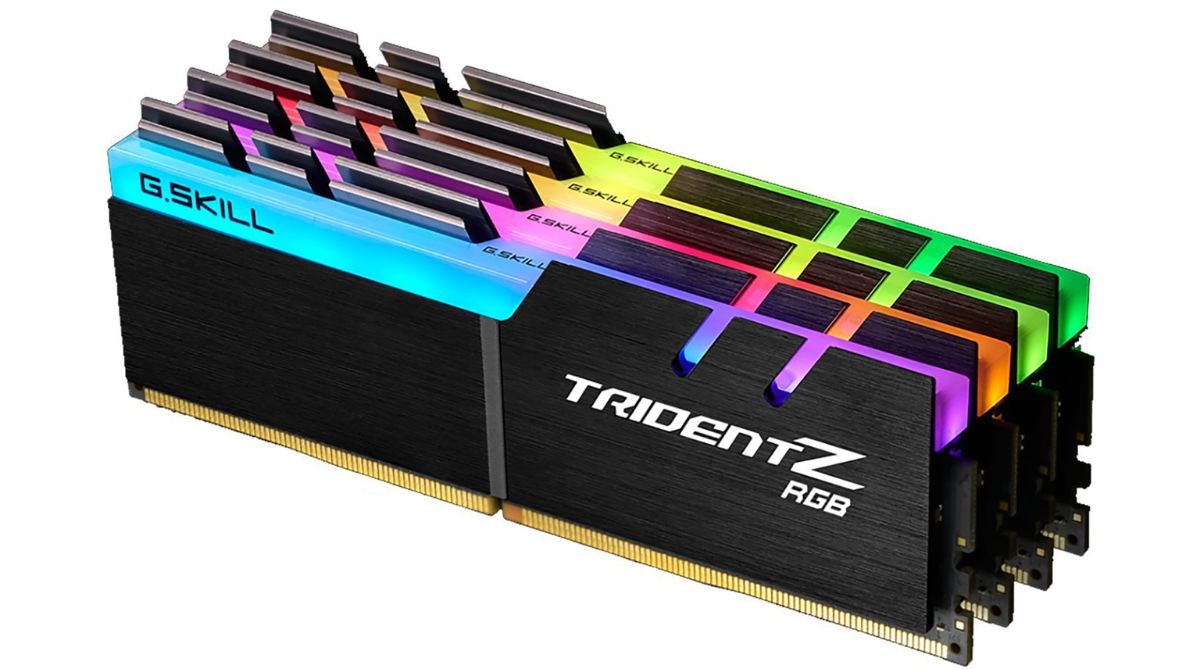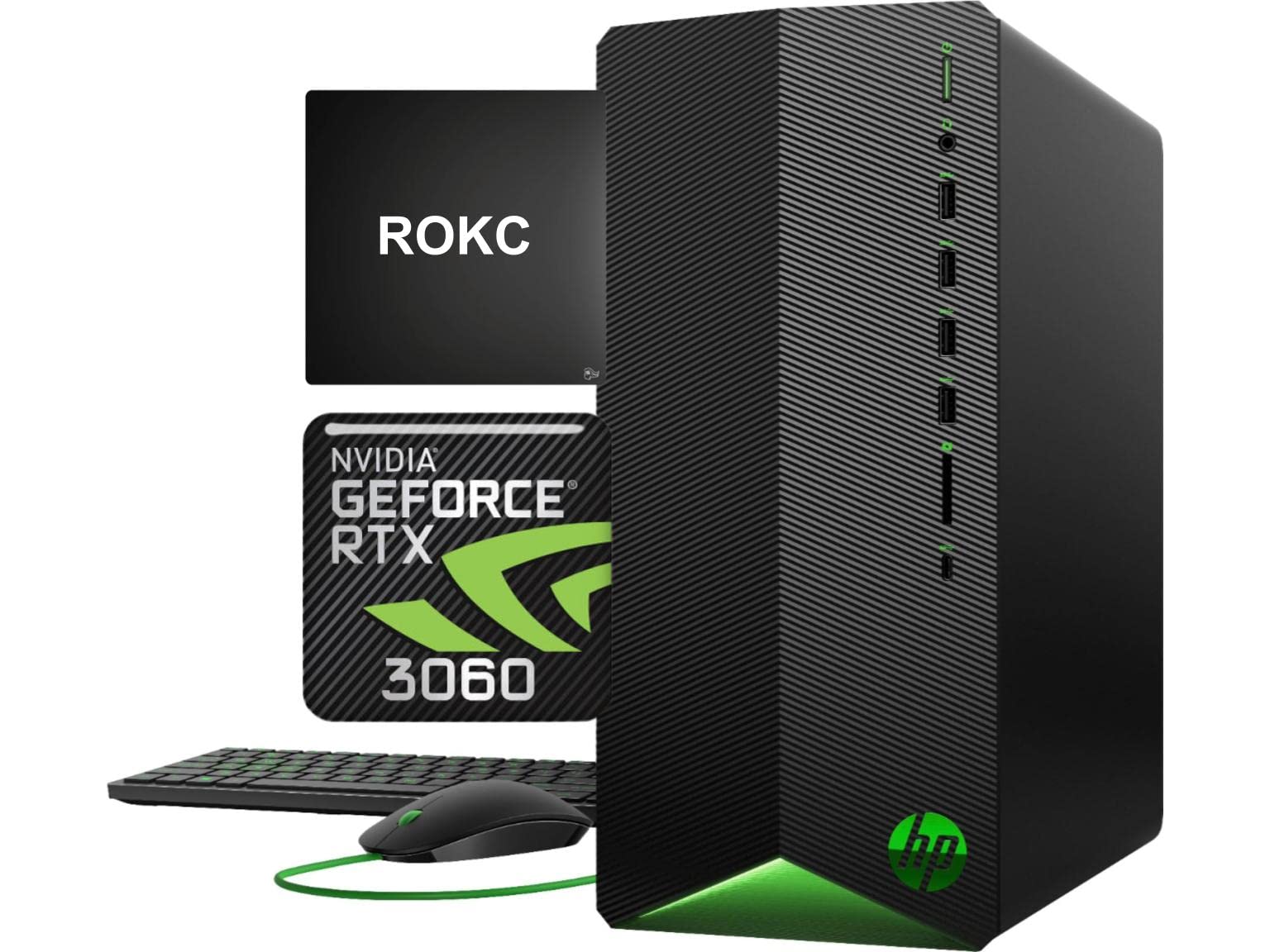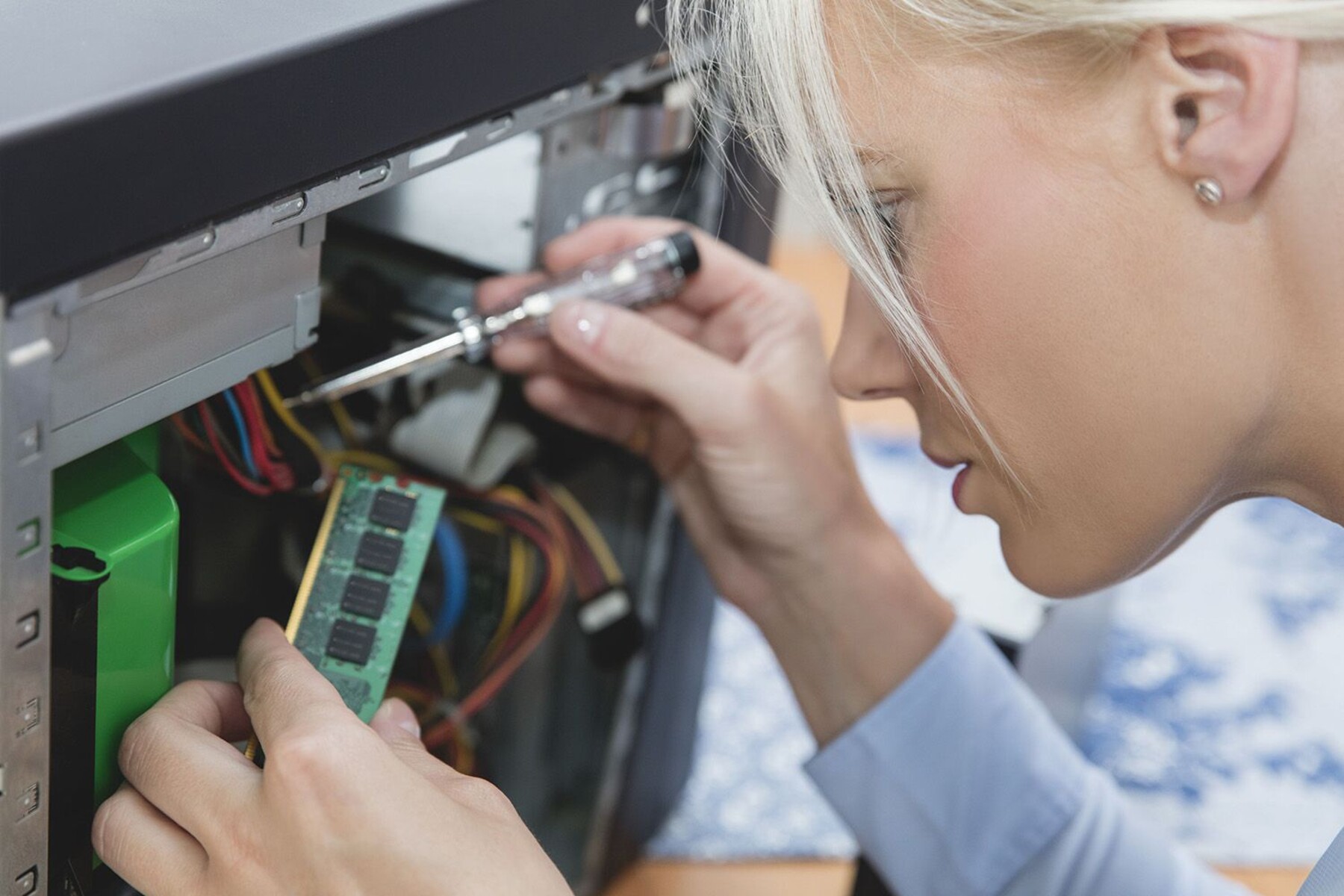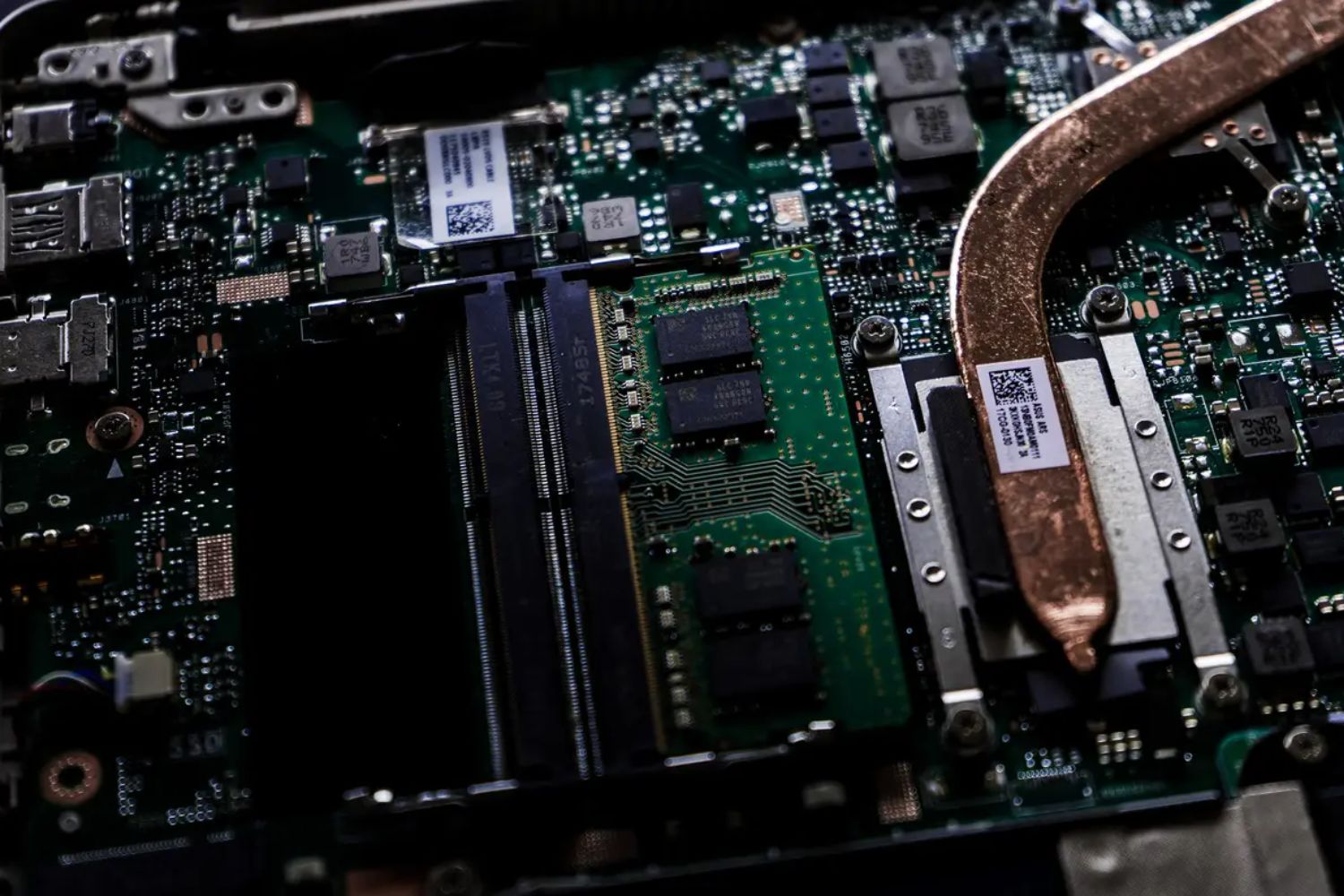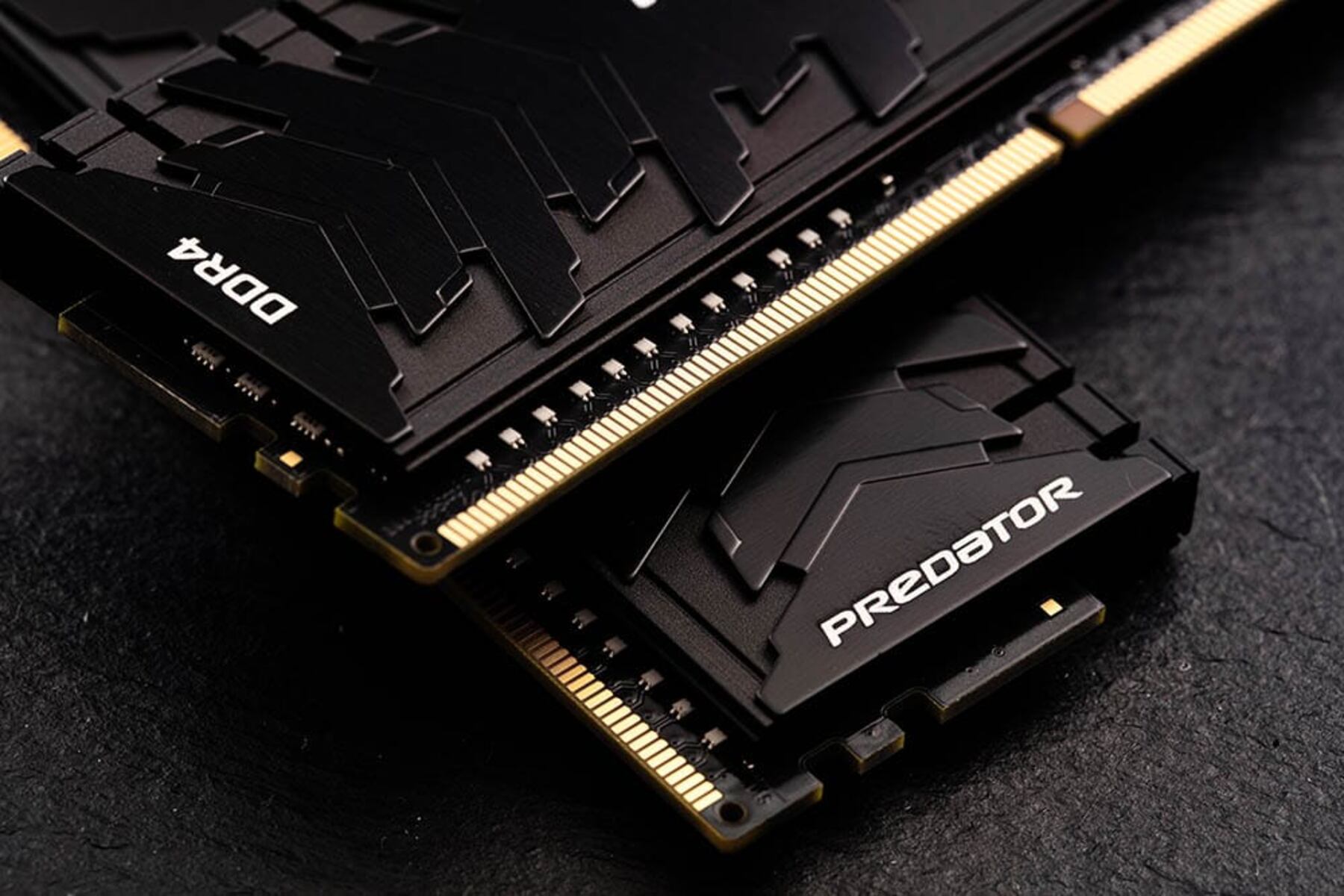Introduction
Welcome to the exciting world of gaming! Whether you are a casual gamer or a hardcore enthusiast, having the right hardware can significantly enhance your gaming experience. One crucial component that plays a vital role in determining the performance of your gaming rig is RAM, or Random Access Memory.
RAM acts as a temporary storage space for data that your computer needs to access quickly. It allows your system to run multiple programs simultaneously, load game assets swiftly, and store important game data for smooth gameplay. Having the right RAM is essential for optimal gaming performance and can make a significant difference in your overall gaming experience.
Understanding the importance of RAM for gaming and choosing the right one can be overwhelming, considering the variety of options available on the market. This article aims to demystify the world of gaming RAM and provide you with a comprehensive guide to help you make an informed decision. We will explore the factors to consider when choosing RAM for gaming, the recommended RAM speed, the amount of RAM needed, and some top recommendations for the best DDR4 and DDR3 RAM for gaming.
Whether you’re building a new gaming PC or upgrading your existing one, this guide will provide you with the necessary information to optimize your gaming performance and get the most out of your gaming experience. So, let’s dive in and explore the world of gaming RAM!
Understanding RAM for Gaming
Before we delve into the specifics of choosing the best RAM for gaming, it’s essential to understand how RAM works and its significance in gaming performance.
RAM serves as a bridge between your computer’s processor and storage, allowing for faster data access and retrieval. When you launch a game, the game’s assets and data are loaded into RAM for quick access, reducing the need for constant retrieval from slower storage devices like hard drives or solid-state drives (SSDs).
The amount of RAM you have can impact how smoothly your games run, especially when multitasking or running resource-intensive applications simultaneously. Insufficient RAM can lead to game stuttering, long loading times, and decreased overall performance.
Another essential factor to consider is RAM latency, often measured in nanoseconds (ns). Lower latency means faster data access and retrieval, resulting in improved gaming performance. However, it’s important to note that higher latency doesn’t always translate to noticeably slower performance, especially in gaming scenarios.
It’s also worth mentioning that a dedicated graphics card with its own VRAM (Video RAM) handles most of the graphical calculations in gaming, separate from the system’s RAM. However, having ample system RAM is still crucial for smooth overall performance, especially when running multiple applications simultaneously.
In summary, RAM plays a pivotal role in gaming by providing quick access to game assets and data, improving overall performance, reducing loading times, and enabling smooth multitasking. The amount of RAM and its latency both contribute to the overall gaming experience.
Now that we have a better understanding of RAM’s importance in gaming, let’s move on to the factors you should consider when choosing the best RAM for gaming.
Factors to Consider When Choosing RAM for Gaming
When selecting RAM for gaming, several factors should guide your decision. Understanding these factors will help you make an informed choice and ensure that the RAM you choose is compatible with your gaming setup and meets your performance requirements. Here are the key factors to consider:
- Capacity: The amount of RAM you need depends on factors such as the games you play, the operating system you use, and other applications you run simultaneously. For most gamers, 8GB is the minimum recommended capacity, but if you play more demanding titles or engage in content creation, 16GB or even 32GB may be more suitable.
- Speed: RAM speed, also known as frequency, is measured in megahertz (MHz). Higher speed RAM generally performs better, but the performance gains may diminish beyond a certain point. Aim for a balance between price and performance, considering your specific needs.
- Latency: RAM latency, measured in timings, indicates the delay between when a command is issued and when it is executed. Lower latency is preferable, but the difference may not be noticeable in most gaming scenarios.
- Compatibility: Ensure that the RAM you choose is compatible with your motherboard. Check the motherboard’s specifications and look for RAM that matches the supported memory type (e.g., DDR4 or DDR3) and speed.
- Brand and Quality: Stick to reputable brands that offer reliable products and good customer support. Quality RAM modules tend to have better stability and longevity.
- Budget: Determine your budget for RAM and prioritize your needs accordingly. Consider getting the best RAM you can afford within your budget constraints.
By taking these factors into account, you can narrow down your options and choose RAM that suits your gaming needs and offers the best value for your money. Keep in mind that finding the perfect balance between capacity, speed, and price will depend on your specific gaming requirements and budget.
Now that you understand the important factors to consider when choosing RAM for gaming let’s move on to discussing the recommended RAM speed for optimal gaming performance.
Recommended RAM Speed for Gaming
When it comes to RAM speed for gaming, the ideal speed depends on several factors, including the processor, motherboard, and the game itself. While faster RAM can provide a boost in performance, it is crucial to consider the limitations of your hardware and the cost-effectiveness of higher-speed RAM modules.
For most gamers, a RAM speed of 3000MHz to 3600MHz is generally recommended. This range strikes a balance between performance and affordability. It provides ample speed to handle demanding games and applications without breaking the bank.
However, it’s worth noting that the actual impact of RAM speed on gaming performance can vary. In certain games and scenarios, the difference may be minimal, while in others, it can be more noticeable. Highly CPU-bound games or tasks that heavily rely on memory bandwidth can benefit more from faster RAM.
When choosing RAM speed, it is essential to consider the compatibility with your motherboard and CPU. Some processors, such as AMD’s Ryzen series, can take advantage of higher RAM speeds due to their architecture’s sensitivity to memory speed. On the other hand, Intel generally has less sensitivity to RAM speed, and the performance gains may be less significant.
If you’re unsure about the optimal RAM speed for your specific setup, it’s best to consult your motherboard’s manual or the manufacturer’s website. They often provide a list of supported RAM speeds and modules that have been tested for compatibility.
Ultimately, the recommended RAM speed for gaming will depend on your specific needs, budget, and hardware compatibility. Consider your usage patterns, the games you play, and any other resource-intensive tasks you may undertake. With careful consideration and research, you can choose RAM speed that offers a good balance between performance, affordability, and compatibility.
Now that we have explored the recommended RAM speed for gaming, let’s discuss the amount of RAM needed for optimal gaming performance.
How Much RAM Is Needed for Gaming
The amount of RAM you need for gaming depends on several factors, including the games you play, the operating system you use, and your multitasking habits. While less demanding games may run smoothly with lower amounts of RAM, more resource-intensive titles and multitasking scenarios require larger RAM capacities.
For most gamers, 8GB of RAM is considered the minimum requirement. It allows for smooth gameplay in many popular games and accommodates basic multitasking, such as browsing the internet or streaming music while gaming.
If you play more demanding titles or engage in resource-intensive tasks like video editing or content creation, upgrading to 16GB of RAM is highly recommended. This increased capacity provides a more significant headroom for smoother gameplay, faster load times, and improved multitasking capabilities.
Some enthusiasts and professionals may even opt for 32GB of RAM or more, especially if they run virtual machines, perform 3D rendering, or work with exceptionally large files. However, for the average gamer, 16GB of RAM should be more than sufficient for current gaming needs.
It’s important to note that while having more RAM than the minimum requirement may offer benefits, it doesn’t necessarily translate into better gaming performance once you surpass a certain threshold. Most games do not utilize more than 8GB to 12GB of RAM, and the additional capacity may not provide noticeable improvements in FPS (frames per second) or overall gaming experience.
Ultimately, the amount of RAM needed for gaming depends on your usage patterns and budget. If you primarily play less demanding games and engage in light multitasking, 8GB should suffice. However, if you’re a serious gamer or frequently handle resource-intensive tasks, opting for 16GB of RAM will future-proof your system and provide a smoother and more enjoyable gaming experience.
Now that we have discussed the amount of RAM needed for gaming, let’s dive into some top recommendations for the best DDR4 RAM for gaming.
Best DDR4 RAM for Gaming
When it comes to choosing DDR4 RAM for gaming, there are several options available that offer excellent performance and compatibility with modern gaming systems. Here are some top recommendations:
- Corsair Vengeance RGB Pro: This popular RAM series from Corsair combines stunning aesthetics with exceptional performance. With speeds ranging from 2666MHz to 4800MHz, the Vengeance RGB Pro offers excellent overclocking potential and comes with customizable RGB lighting to add a touch of style to your gaming rig.
- G.Skill Trident Z RGB: Known for its impressive speed and reliability, the G.Skill Trident Z RGB series is a favorite among gamers. Available in various speeds up to 4600MHz, it offers tight timings for improved performance and comes with mesmerizing RGB lighting for a visually stunning setup.
- Kingston HyperX Predator RGB: The HyperX Predator RGB series from Kingston delivers superb gaming performance coupled with eye-catching RGB lighting effects. With speeds up to 4133MHz and low latency, it offers an excellent balance of speed and reliability for gaming enthusiasts.
- Corsair Dominator Platinum RGB: For gamers who demand the best, the Corsair Dominator Platinum RGB series is an excellent choice. With speeds up to 4800MHz and CL14 latency, this RAM offers exceptional overclocking potential and ensures optimal performance even in the most demanding gaming scenarios.
- Crucial Ballistix Elite: Designed for high-performance gaming, the Crucial Ballistix Elite series offers excellent speed and reliability. With speeds up to 4000MHz and low timings, this RAM delivers blazing-fast performance and stability for immersive gaming experiences.
These are just a few of the top DDR4 RAM options available for gaming. Each series offers different speed options and features, allowing you to choose the one that best fits your performance requirements and aesthetic preferences.
When selecting DDR4 RAM for your gaming setup, consider factors such as capacity, speed, latency, compatibility, and budget. By carefully weighing these factors and choosing a reputable brand, you can ensure that your RAM meets your gaming needs and provides a reliable and efficient performance.
Now that we have explored the best DDR4 RAM options for gaming, let’s move on to discussing the best DDR3 RAM for those who have older systems or specific requirements.
Best DDR3 RAM for Gaming
While DDR4 RAM has become the standard for modern gaming systems, there are still those who have DDR3-based systems or specific requirements that necessitate the use of DDR3 RAM. If you fall into this category, here are some top recommendations for the best DDR3 RAM for gaming:
- Corsair Vengeance Pro DDR3: Offering excellent performance and compatibility, the Corsair Vengeance Pro DDR3 series is a solid choice for DDR3-based gaming systems. With speeds up to 2400MHz and various capacity options, this RAM provides reliable and efficient performance for gaming enthusiasts.
- Kingston HyperX Fury DDR3: The HyperX Fury DDR3 series from Kingston is known for its affordability and quality. With speeds ranging from 1333MHz to 1866MHz, it offers a decent performance improvement over standard RAM and is compatible with both Intel and AMD systems.
- G.Skill Ripjaws X Series DDR3: G.Skill Ripjaws X Series DDR3 RAM delivers impressive performance and stability for gamers on DDR3 systems. With speeds ranging from 1333MHz to 2400MHz, low CAS latencies, and various capacity options, it offers flexibility to meet different gaming needs.
- Corsair Dominator Platinum Series DDR3: For those seeking top-tier DDR3 performance, the Corsair Dominator Platinum Series DDR3 RAM is an excellent choice. With speeds up to 2400MHz and low CAS latencies, it offers exceptional overclocking potential and ensures optimal gaming performance.
- Team Xtreem DDR3: The Team Xtreem DDR3 RAM series delivers reliable performance and compatibility for gamers still utilizing DDR3 systems. With speeds up to 3000MHz and low latencies, it offers a noticeable boost in gaming performance for those looking to maximize their DDR3 setups.
It’s important to note that while DDR3 RAM can still deliver satisfactory gaming performance, it is becoming less prevalent as DDR4 becomes the mainstream option. If you are building a new system, it is generally recommended to go with DDR4 RAM for future-proofing and compatibility. However, if you already have a DDR3-based system or have specific requirements, these DDR3 RAM options can still provide a satisfying gaming experience.
When choosing DDR3 RAM for your gaming setup, consider factors such as speed, capacity, compatibility with your system, and budget. By selecting a reputable brand and ensuring compatibility with your motherboard, you can enhance your gaming experience on a DDR3-based system.
Now that we have explored some of the best DDR3 RAM options available for gaming, let’s move on to discussing the best value RAM for those who are looking for a budget-friendly option.
Best Value RAM for Gaming
When it comes to choosing RAM for gaming, not everyone has an unlimited budget. If you’re looking for a cost-effective option that provides good performance without breaking the bank, there are some excellent value RAM options available. Here are some top recommendations for the best value RAM for gaming:
- Corsair Vengeance LPX: The Corsair Vengeance LPX series offers a great combination of price, performance, and reliability. With speeds ranging from 2133MHz to 3200MHz and capacity options up to 16GB, it delivers solid performance for budget-conscious gamers.
- Crucial Ballistix Sport LT: Known for its affordability and reliability, the Crucial Ballistix Sport LT series is an excellent value RAM option for gaming. With speeds up to 3200MHz and various capacity choices, it provides good performance for gaming enthusiasts on a budget.
- G.Skill Aegis: G.Skill Aegis RAM offers a great balance between price and performance. With speeds ranging from 2133MHz to 3200MHz and capacities up to 64GB, it provides a cost-effective solution for gamers who require higher capacities for multitasking or content creation.
- Patriot Viper Elite: The Patriot Viper Elite series offers affordable RAM modules without compromising on performance. With speeds up to 3200MHz and various capacity options, it provides decent gaming performance and value for budget-oriented gamers.
- ADATA XPG Z1: The ADATA XPG Z1 series offers competitive performance at an attractive price point. With speeds up to 3200MHz and capacities up to 16GB, it delivers good value for gamers looking for budget-friendly RAM options.
These value RAM options provide solid performance and reliability at a more affordable price compared to high-end gaming RAM. While they might not offer the same overclocking potential or fancy features as more expensive options, they can still deliver a satisfying gaming experience without breaking the bank.
When selecting value RAM for gaming, consider factors such as speed, capacity, price, and compatibility with your system. By striking a balance between performance and affordability, you can find RAM that meets your gaming needs while staying within your budget.
Now that we have explored some of the best value RAM options for gaming, let’s move on to discussing the topic of overclocking RAM for gaming.
Overclocking RAM for Gaming
Overclocking RAM involves running it at higher speeds or lower latencies than specified by the manufacturer. While it can provide a performance boost, it’s important to note that not all RAM modules or systems are suitable for overclocking. Additionally, overclocking may void warranty and potentially introduce instability if not done correctly or if the hardware can’t handle the increased speeds.
For gamers looking to squeeze out extra performance from their RAM, overclocking can be worth exploring. Here are a few key points to keep in mind when overclocking RAM for gaming:
- Check compatibility: Ensure that your motherboard and CPU support RAM overclocking. Consult the motherboard’s manual or manufacturer’s website for information on compatible RAM speeds and overclocking options.
- Start with safe settings: Begin by increasing the RAM speed or decreasing the latency settings by small increments. It’s essential to test stability after each adjustment to ensure that your system remains stable under stress.
- Monitor temperatures: Overclocking RAM can generate additional heat. Make sure that your system has adequate cooling, and monitor the temperatures to prevent overheating and potential damage to your hardware.
- Perform stability tests: Use memory stress-testing software, such as Memtest86 or Prime95, to check if your overclocked RAM remains stable under prolonged usage. This will help identify any instability issues that may arise.
- Adjust RAM voltage if necessary: Increasing RAM voltage can sometimes improve stability when overclocking. However, it’s important not to exceed the recommended voltage range specified by the RAM manufacturer to avoid potential damage.
- Be prepared for trial and error: Overclocking RAM is not an exact science, and results can vary between different RAM modules and systems. It may require some experimentation and tweaking to find the optimal overclocking settings for your specific system.
Keep in mind that not all RAM modules are capable of significant overclocking, and performance gains may be modest. Also, remember that overclocking introduces additional stress on the RAM and may decrease its lifespan. Therefore, it’s crucial to weigh the potential benefits against the potential risks and consider whether the performance gains are worth the effort and potential downsides.
Now that we have explored the essentials of overclocking RAM for gaming let’s conclude our guide.
Conclusion
Choosing the best RAM for gaming is a critical decision that can significantly impact your gaming experience. By considering factors such as capacity, speed, latency, compatibility, and budget, you can make an informed choice that meets your gaming needs and enhances performance.
For those with modern systems, DDR4 RAM offers a wide range of options, including the high-performance Corsair Vengeance RGB Pro and G.Skill Trident Z RGB. If you have an older system or specific requirements, the Corsair Vengeance Pro DDR3 and G.Skill Ripjaws X Series DDR3 are reliable choices.
Furthermore, those on a budget can still find great options with the Corsair Vengeance LPX and Crucial Ballistix Sport LT offering excellent value for the price.
Remember, the optimal amount of RAM typically ranges from 8GB to 16GB, depending on the games you play and your multitasking needs. Consider your usage patterns and budget to find the right balance.
Lastly, for those interested in squeezing out every ounce of performance from their RAM, overclocking can provide a potential boost. However, proceed with caution and ensure compatibility, monitor temperatures, and perform stability tests to maintain a stable system.
Ultimately, selecting the best RAM for gaming involves finding the right combination of performance, compatibility, and affordability to suit your specific needs. By doing thorough research and considering the factors discussed in this guide, you can make a decision that enhances your gaming experience and allows you to fully immerse yourself in the virtual worlds you love.







